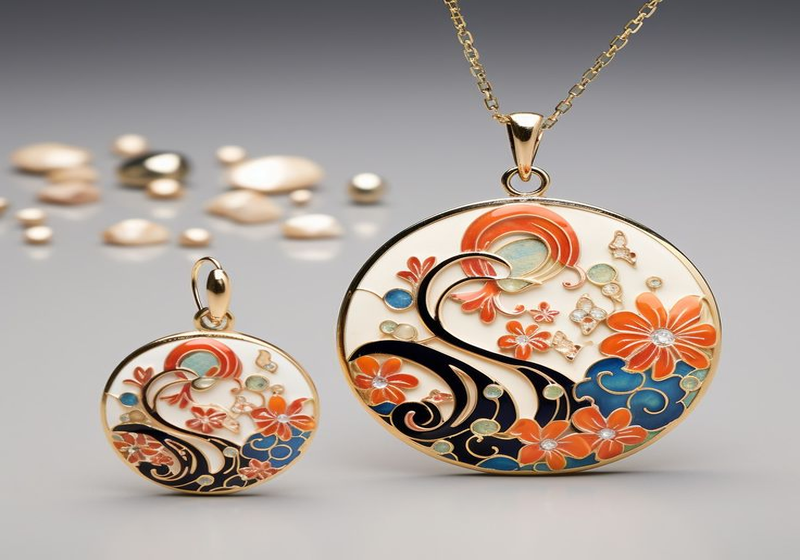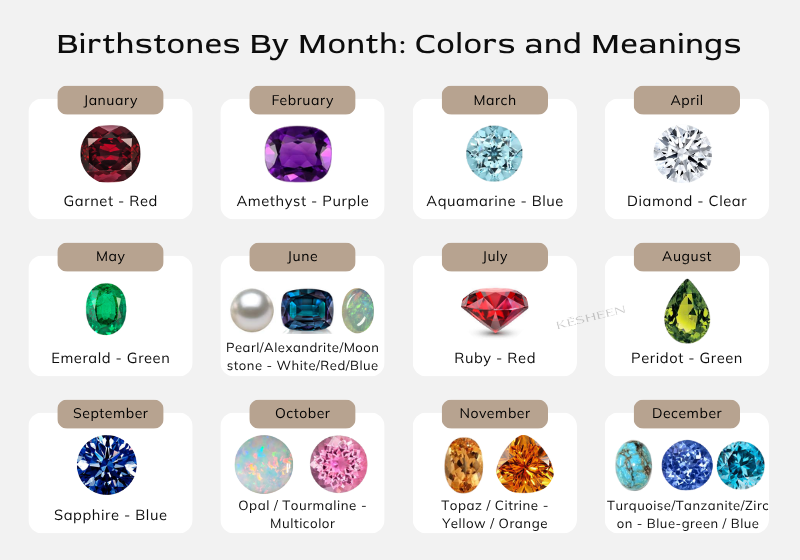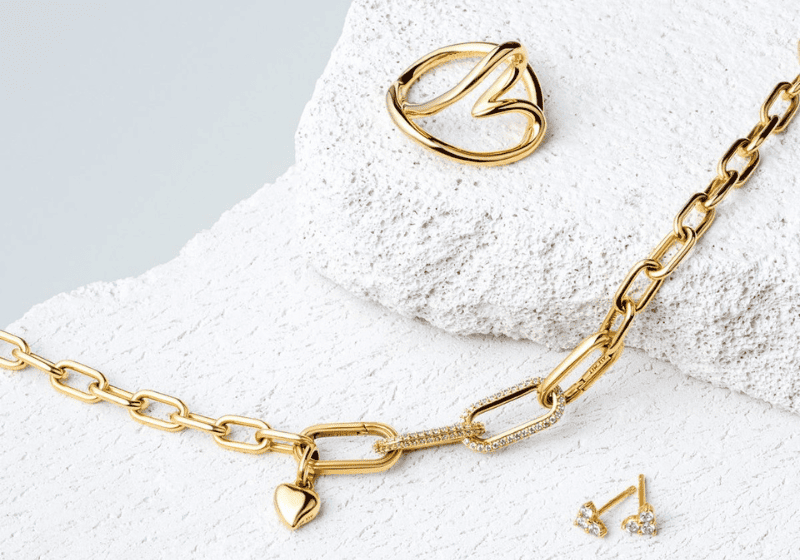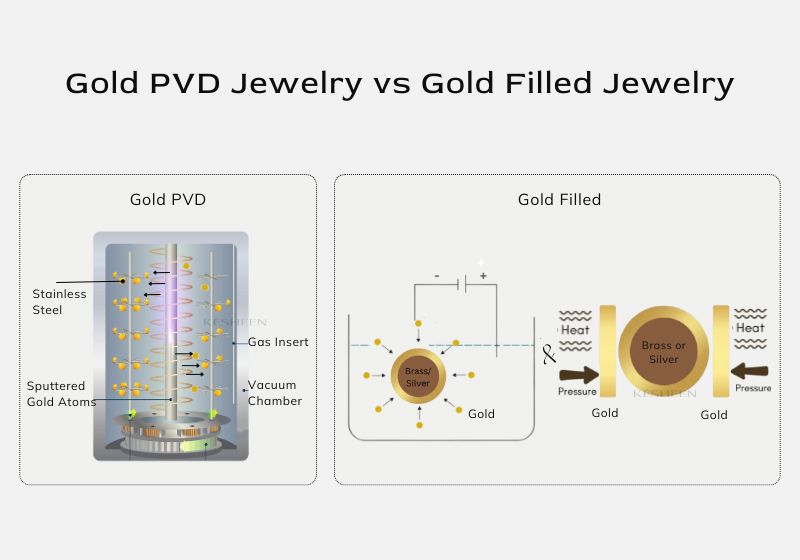The ancient art of enameling dates back to over 5000 years ago, even before ancient Greece and the Byzantine Empire. It is a technique that has been revered throughout history and is found today in kitchenware, building cladding, signages, sculptures, and several other applications.
When used on jewelry, enameling transforms objects of adornment into beautiful, eye-catching works of art. In this blog post, we will discuss enamel jewelry, highlighting its functions and popular techniques, as well as its benefits.
What is Enameling Jewelry?
Enameling describes a process of fusing powdered glass onto the base metal at very high temperatures, often between 1300⁰ to 1600°F. This technique is mostly applied to metals, but can also be applied to glass and ceramics. Jewelry enameling was used during past civilizations to create amazing jewelry and it remains popular today because of its ability to form a durable, colorful coating.
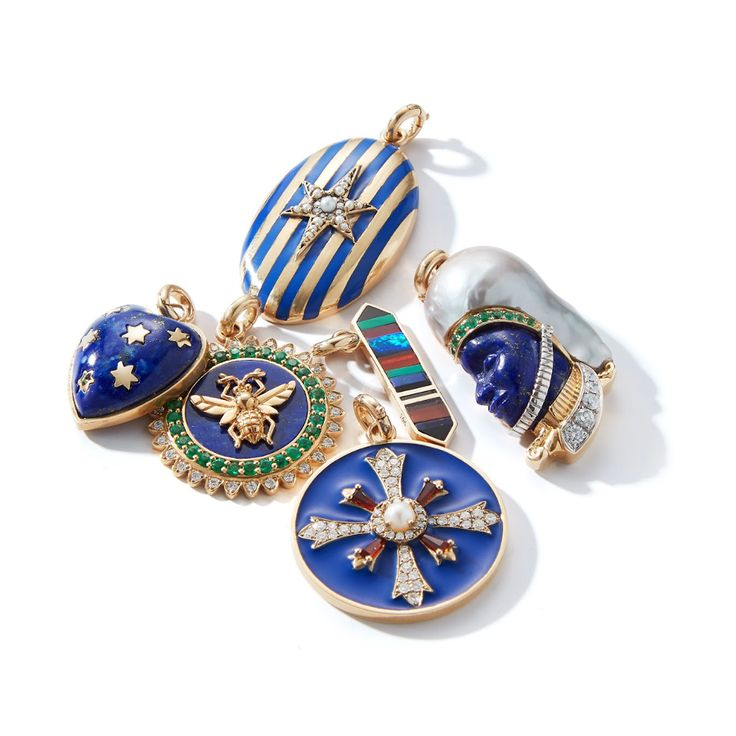
Source: Pinterest
What is the Function of Enamel?
Enamel has been used for various purposes throughout time, including adding color to precious stones, coating steel from rusting, and decorating ceremonial objects. For jewelry, enamel is used to create vibrant colors and unique textures as well as enhance their overall aesthetic appeal. It also protects jewelry surfaces from tarnishing and corrosion, ensuring their longevity.
Types of Enamel Jewelry Color
Enamels come in different types of colors that can be applied to jewelry designs. The two types of enamel colors include:
Opaque Enamel
These types of enamels are non-transparent and come in a variety of different colors. They are excellent for creating contrast and are supplied in either a matte or glossy finish. When combined with transparent enamel, they can add depth and dimension to a piece and achieve interesting design effects.
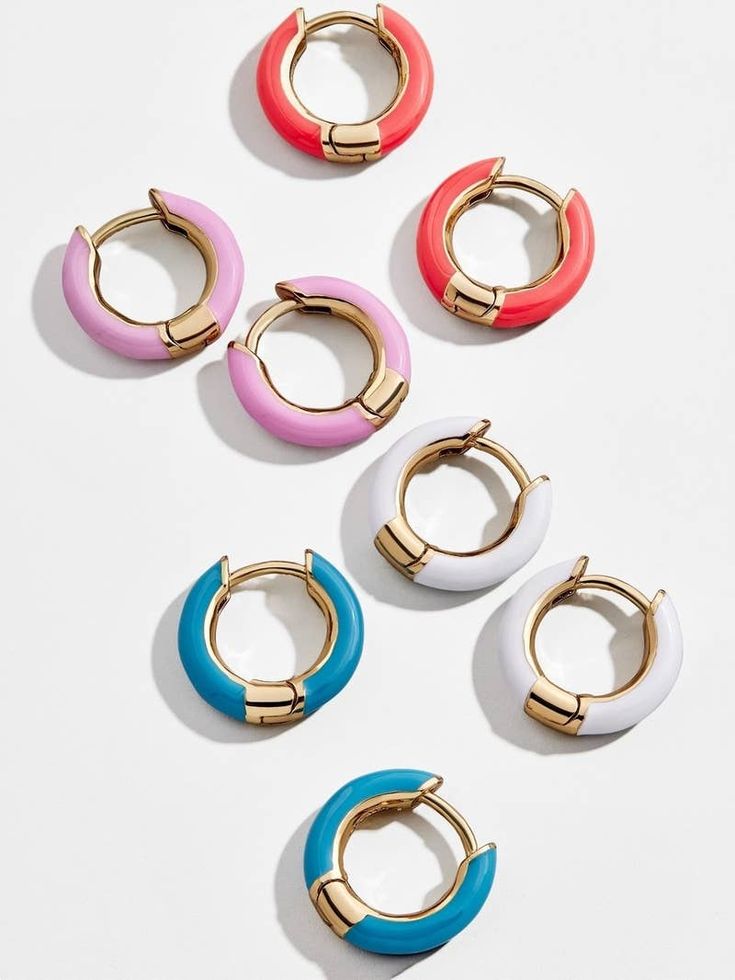
Source: Pinterest
Transparent Enamel
Transparent enamels allow light to pass through the color and reflect off the metal, highlighting the color richness. They are used to layer, shade, and blend different colors into enameled pieces. These enamels are also combined with other accessories, like silver, gold foils, and glass beads, to create unique effects.
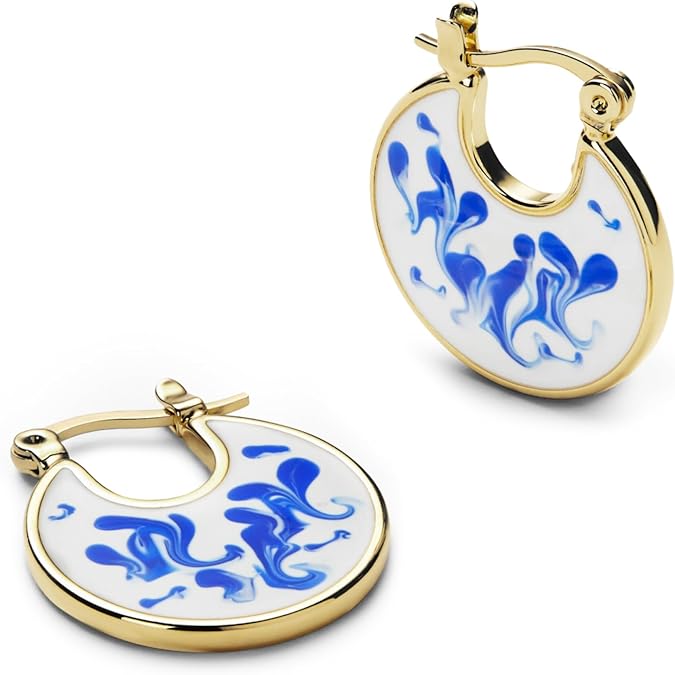
Source: Pinterest
Common Types of Enameling Techniques
Through the years of enameling in jewelry, a wide variety of techniques has been developed to suit different desired results. Here are some of the most common ways of enameling jewelry:
Cloisonné
This is one of the earliest types of enameling techniques. It involves filling shaped compartments made of gold, thin copper or bronze wires with enamel and then heating. Typically, the compartments are shaped into the desired pattern. As soon as the heating process is done, the enamel designs are patterned like the wire compartments.
Champlevé
In champlevé enameling, the metal surface is etched, cast, or carved to create recesses that are then filled with enamel frit and put under heat. The metal’s outer surface is exposed and does not undergo enameling. This technique results in a smooth texture and vibrant color.
Plique-à-jour
Plique-à-jour is an enameling technique where the enamel is suspended between metal wires without any backing and then is fired so that the light can shine through. This creates a shimmering, translucent effect that makes it seem as though the jewelry is glowing from within.
Benefits of Enamel Jewelry
- Color Variety
Enamel is renowned for its ability to form a wide array of vivid colors, which is achieved by adding different metal oxides to the powdered glass. Each metal oxide has a unique hue, allowing jewelry designers to create an extensive range of colorful pieces. Moreover, the ability to blend these PVD plating jewelry colors during enameling further expands the creative horizons of designers.
- Aesthetic Appeal
Enameling jewelry ensures a lustrous finish, which forms when the enamel is fired and the powdered glass melts and flows. This glistening, smooth surface enhances the visual appeal of the jewelry, for both complex designs and simple pieces. By producing a glossy surface that reflects light beautifully, enameling creates an elegant and refined look that contributes to the aesthetic quality of the jewelry piece.
- Enhanced Durability
Unlike other materials that tend to fade or corrode with time, enamel for jewelry offers a hard, glass-like coating that is highly resistant to wear and corrosion. When combined with jewelry by a custom jewelry manufacturer, enamel extends the life of the jewelry because of its strength and durability. This makes it an ideal choice for jewelry pieces used frequently.
- Enhanced Wearing Experience
Enameling brings together aesthetic appeal, durability, and comfort to make extraordinary jewelry. This technique creates a smooth, glossy surface that reduces friction, making the jewelry more comfortable to wear. While enamel is a great choice for adding brilliance and decor, it also provides safety as this material is often lead-free with negligible toxicity.
How is Enamel Jewelry Made?
The enameling process transforms simple metal into beautiful, glass-like pieces, which is why a common question in the jewelry industry is: how to make enamel jewelry?
Explained below are the steps on how to make enamel jewelry:
Step 1: Polishing the Surface
Prepare the jewelry by polishing it to a smooth finish, making sure that the item is free from any scratches that may interfere with the enamel application. This also serves to increase the adhesive ability of the enamel.
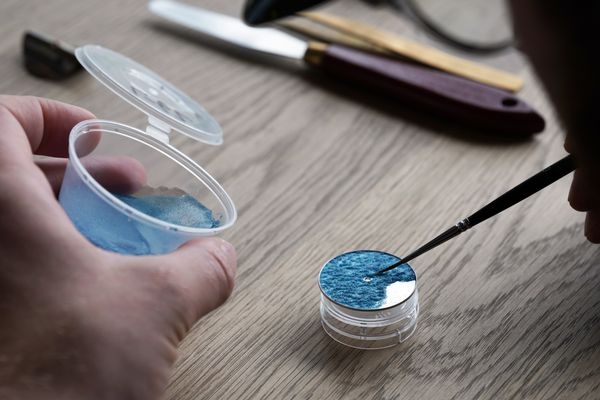
Source: Pinterest
Step 2: Cleaning the Surface
After polishing, thoroughly clean the surface to remove any dirt, grease, oils, or metal oxides. It is important to keep the surface clean and colors separate and uncontaminated as any residue on the surface can prevent effective bonding of the enamel.
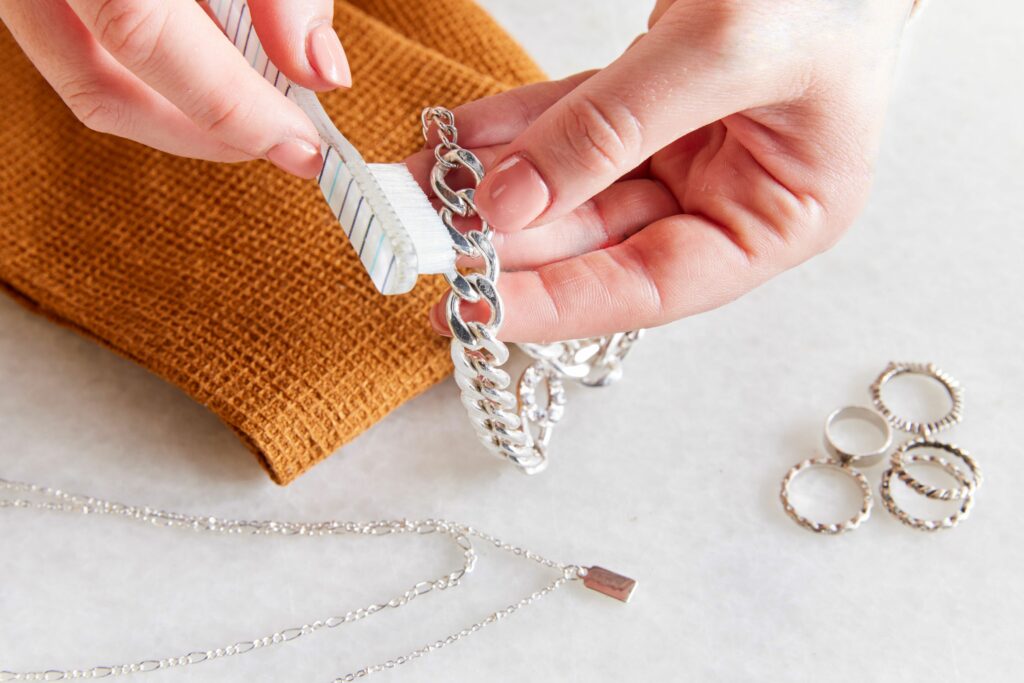
Source: Pinterest
Step 3: Applying the Enamel
This involves placing colored glass powder onto the metal surface. The enamel powder is chosen based on the desired color and effect, and is applied primarily by dry sifting or wet packing.
- Dry Sifting: In this method, dry powder can be applied directly onto the metal through a fine mesh. This technique encourages uniform distribution of the enamel.
- Wet Packing Process: Otherwise, the glass powder is ground and mixed in water to form a paste, and then it is applied to the metal using a paintbrush.
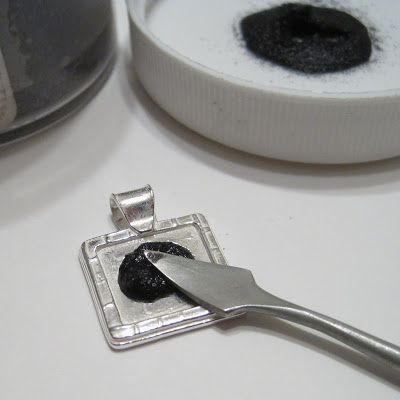
Source: Pinterest
Step 4: Firing and Curing the Enamel
Once the enamel is applied, fire the jewelry piece in a kiln at temperatures ranging from 750 to 850 degrees Celsius or more. The high temperature ensures that the glass particles melt properly and bond tightly with the metal, with the exact temperature selected depending on the enamel color.
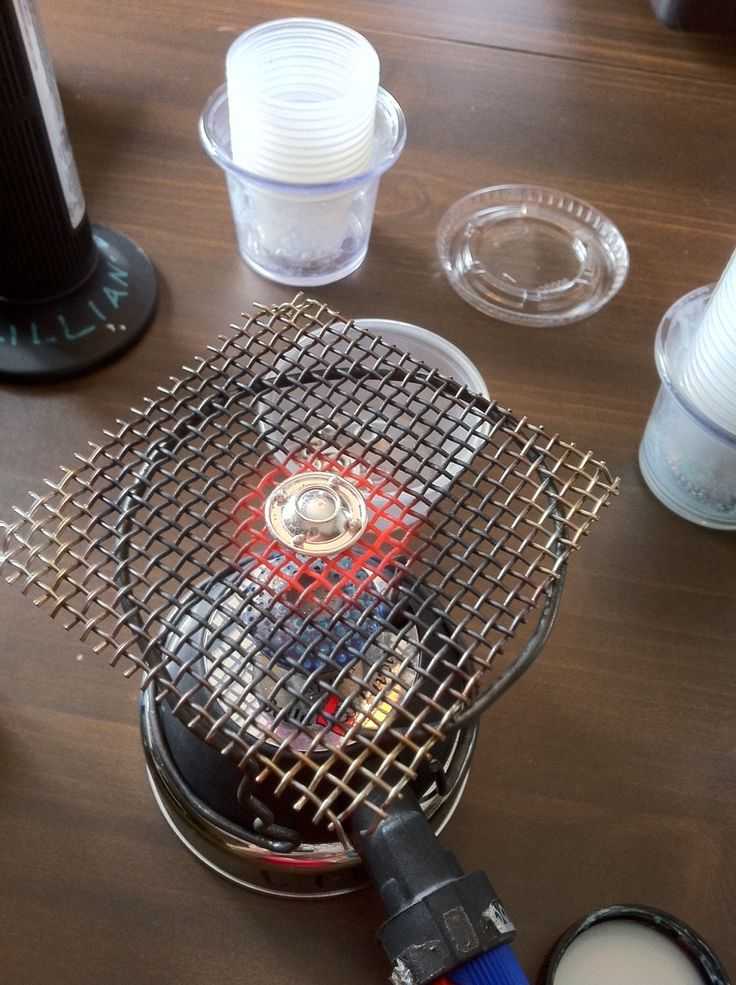
Source: Pinterest
Step 5: Removing the Finished Piece
After firing and cooling, the piece hardens into a solid, glass-like form. Then, the enameled jewelry is inspected for any defects, and polished to smooth out any rough edges or excess enamel. With rounds of applications and firing, it achieves rich color depth and captivating translucency.
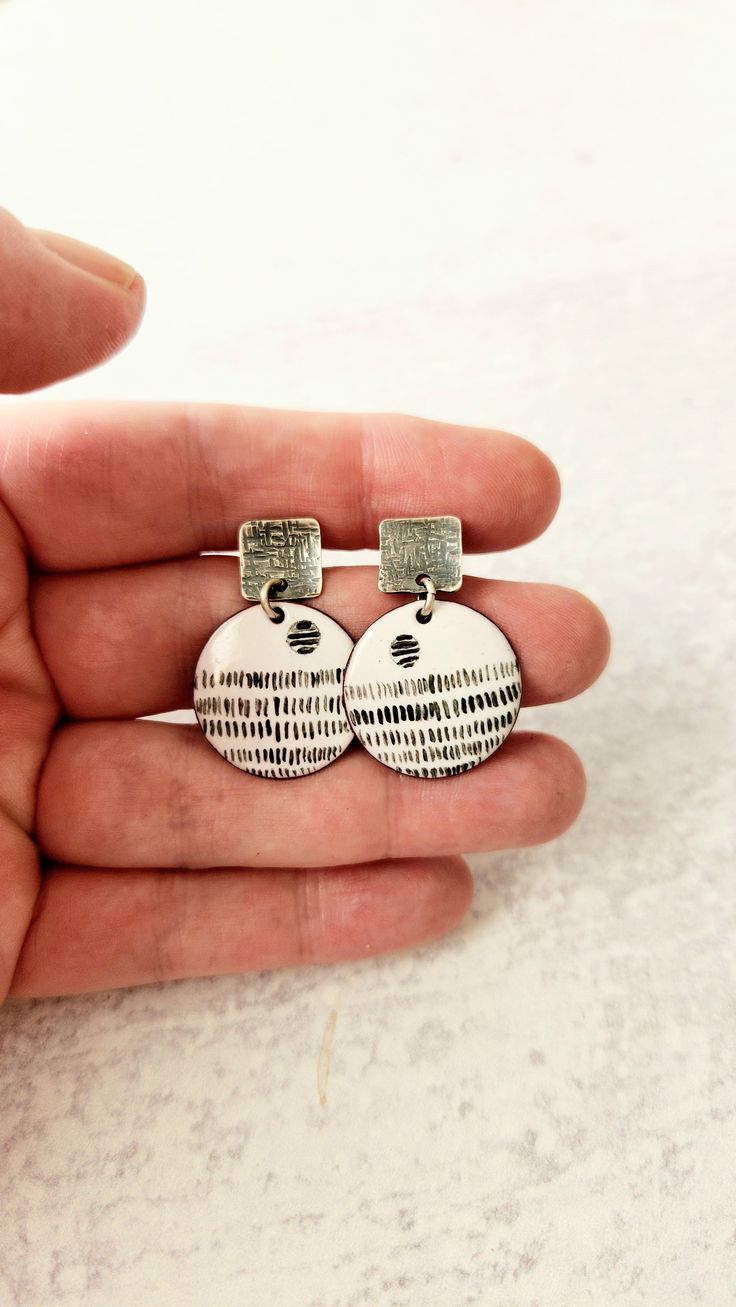
Source: Pinterest
Cold Enamel vs Hot Enamel, What’s the Difference?
Vitreous enamel, also known as hot enamel, and cold enamel have similar properties as they both enhance the beauty and durability of jewelry. However, they differ in some ways. Here’s a detailed comparison of cold enamel vs hot enamel:
Manufacturing Process
- Cold Enamel: This enamel is made by mixing resin or polymer-based material with pigments for color and curing at room temperature or low temperature. This process is much simpler as it requires only one firing
- Hot Enamel: The production of hot enamel involves fusing powdered glass onto the base metal at firing temperatures ranging from 750⁰ to 850⁰ Celsius. This process is more complex as it requires multiple firings and more skilled craftsmanship.
Texture & Effect
- Cold Enamel: Cold enamel has a plastic texture that makes it look cheap. It mimics the look of enamel but doesn’t provide the same rich, glass-like effect as hot enamel.
- Hot Enamel: This type of enameling process on metal provides a smooth, glossy surface with a glass-like finish that offers depth, vibrant colors, and a high level of translucency.
Durability
- Cold Enamel: As a result of its polymer-based material, this enamel in jewelry is prone to tarnish and scratch quickly after several months.
- Hot Enamel: Hot enamel is highly durable and offers excellent resistance to scratching and fading. This enamel type is more durable than cold enamel.
Know These When You’re Buying Enamel Jewelry For Your Collection
Enamel jewelry is loved for its vibrant colors, durability, and artistic appeal. Understanding the materials, techniques, and craftsmanship behind enamel jewelry can help you make an informed purchase. Here are key factors to consider before adding enamel jewelry to your collection.
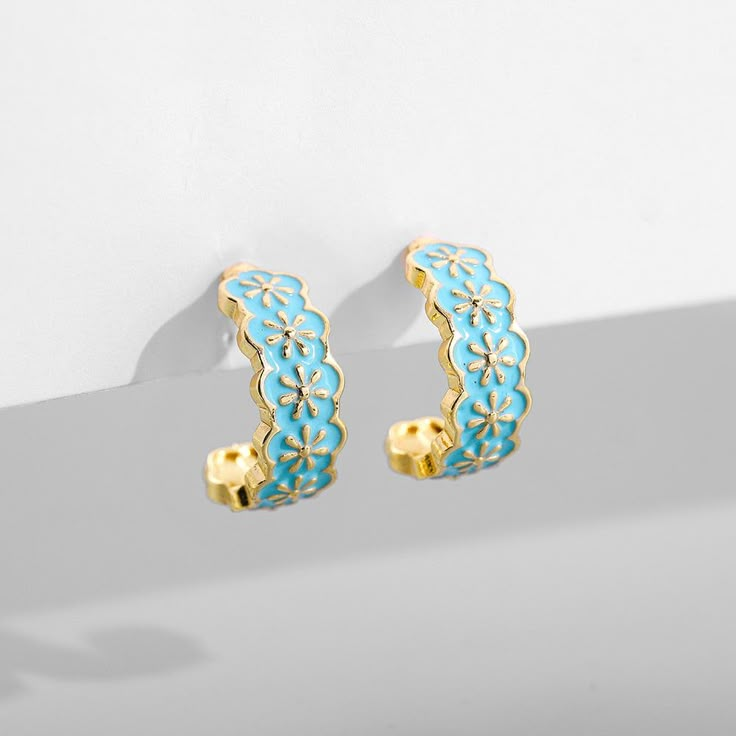
Pay Attention to the Materials Used
Enamel jewelry typically involves fusing glass powder onto metal with the help of fire to create a durable, high-quality finish. However, some low-quality enamel pieces use resin instead of glass, resulting in a plastic texture that easily tarnishes or scratches.
In addition, base metals used by a stainless steel jewelry manufacturer for enameling can determine how the coating will turn.
Consider the Complexity of Design and Color
The complexity of the enameling technique and the number of colors applied to a piece of jewelry can influence their price. Each additional color often requires a separate layer of enamel, with each layer needing to be fired individually. This requires skill from artisans, resulting in increased production time and costs.
Is Enamel Jewelry Waterproof?
Enamel jewelry is water-resistant, but it isn’t completely waterproof. So, can enamel jewelry get wet? Yes, occasional moisture is fine. However, repeated exposure to water, sweat, soap, or chemicals may weaken the enamel surface. For long-term durability and shine, it is best recommended to remove enamel jewelry before swimming or showering.
Is Enamel Jewelry Expensive?
While some antique designs or luxury brands with complex enameling and craftsmanship can be expensive, most enameling jewelry is affordable. Their affordability mainly depends on the base metal value, the number of colors applied, and how large and detailed the area that needs enameling is.
Does Enamel Jewelry Tarnish?
Most enamel jewelry pieces are resistant to tarnishing, wear, and corrosion. However, enamel jewelry pieces will tarnish eventually after long-term use, if not protected well.
Is Enamel Jewelry Durable? How Long Does Enamel Last on Jewelry?
Enamel jewelry is very durable when processed properly and maintained. They are typically not prone to much damage, making them an ideal choice for everyday wear. When protected from harsh handling, chemicals, or oils, enamel jewelry pieces can last for years and will maintain their color and integrity.
Can You Shower With Enamel Jewelry?
Enamel jewelry, especially vitreous enamel, is water-resistant. However, showering could expose it to potentially harsh chemicals found in soaps and body-wash products, which can lead to wear and tear. It is best to remove before showering.
Key Takeaway
Jewelry enameling involves pieces that are brilliantly colored, durable, and visually appealing. With its versatility and unique value, there’s no limit to the creativity of enameling jewelry. However, it’s necessary to consider the material used, as well as the design complexity and color before buying enamel jewelry.
